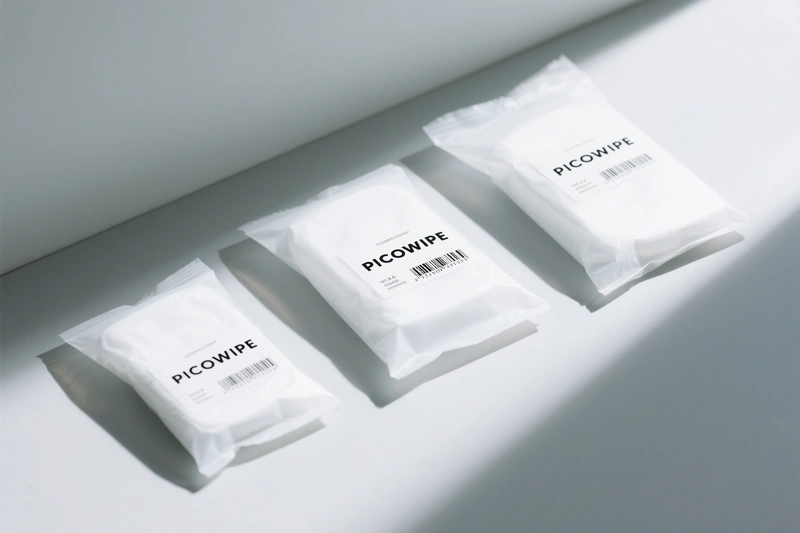By [email protected] — Charting the depths of expertise
Cleanroom wipers can be considered textiles, and textiles (like clothing) usually do not have a listed shelf life. However, to maintain their cleanliness and prevent them from becoming a source of contamination, Cleanroom wipers do have a shelf life.
The shelf life of a cleanroom wiper refers to its ability to maintain its cleanliness class and performance standards, not its physical decay. The core influencing factors are:
Packaging Integrity: The vacuum/sealed packaging is the only barrier; aging or leaks lead to contamination. Material Degradation: Synthetic fibers (Polyester/Polypropylene) are relatively stable, but products containing natural fibers (cellulose) or antistatic agents will degrade. Antistatic agents decay and lose efficacy in 1-2 years. Cleanliness Guarantee Period: The manufacturer's warranty for particle release (LPC) and ionic residue (IC) (typically 3-5 years).
Shelf Life Differences by Cleanroom Wiper Type
The specific meaning and duration of shelf life vary by product type. The table below clearly compares the differences:
| Type | Limiting Factor | Typical Shelf Life | Expiration Risk |
|---|---|---|---|
| Sterile Cleanroom wipers | Ability of packaging to maintain a sterile barrier | 3-5 years (Medical grade ≤180 days) | Loss of sterility, microbial contamination |
| Presaturated Wipes (e.g., IPA) | Stability and efficacy of the solvent (e.g., alcohol) | 3 years | Solvent evaporation, cleaning/disinfection failure |
| Non-Sterile Dry Wipes | Performance degradation of materials in long-term storage | Recommended use period: 5 years (no mandatory expiration) | Increased particle shedding |
| Specialty Functional Wipes | Efficacy of antistatic agents; moisture absorption of natural fibers (Cellulose + Polyester type) | Antistatic agents decay in 1-2 years; cellulose may yellow or absorb moisture | Antistatic failure; fiber degradation from moisture |
Key Factors: Storage and Packaging
The shelf life provided by manufacturers is based on ideal conditions; actual management is critical.
🌡️ Storage Environment (Crucial)
Temperature: Room temperature (15°C - 30°C). High heat accelerates aging. Humidity: Below 60% RH. High humidity can promote microbial growth. Light: Must be stored away from light, especially UV, which causes material degradation. Physical/Chemical: Avoid compression or heavy loads, and isolate from volatile chemicals.
🛡️ Packaging Integrity
Packaging is the final line of defense for cleanliness (commonly double-bagged). Must be visually inspected before use. If holes, scratches, or poor seals are found, it is considered contaminated, regardless of the expiration date.
Expiration Risks and Management Practices
⚠️ Expiration Risks
Using expired or damage-packaged cleanroom wipers poses three major risks:
Introducing External Contamination: Environmental particles or microbes enter through damaged packaging. Causing Secondary Contamination: Material degrades, causing the wipe to shed lint and particles during use. Functional Failure: Loss of cleaning, disinfecting, or antistatic properties.
✅ Best Management Practices
FIFO Principle: Strictly follow "First-In, First-Out" to use older stock first. Receiving Inspection: Check lot numbers, manufacturing/expiration dates. Set a "minimum remaining shelf life" standard. Proper Storage: Use dedicated shelving, avoid stacking, and ensure environmental conditions (temp/humidity) are met. Pre-Use Check: Before entering the cleanroom, re-confirm the inner packaging is intact. Post-Opening Management: Once opened, the shelf life of sterile products is extremely short (e.g., use within 24 hours). Expired Product Handling: Immediately quarantine and discard expired or suspect products. Never use them.


